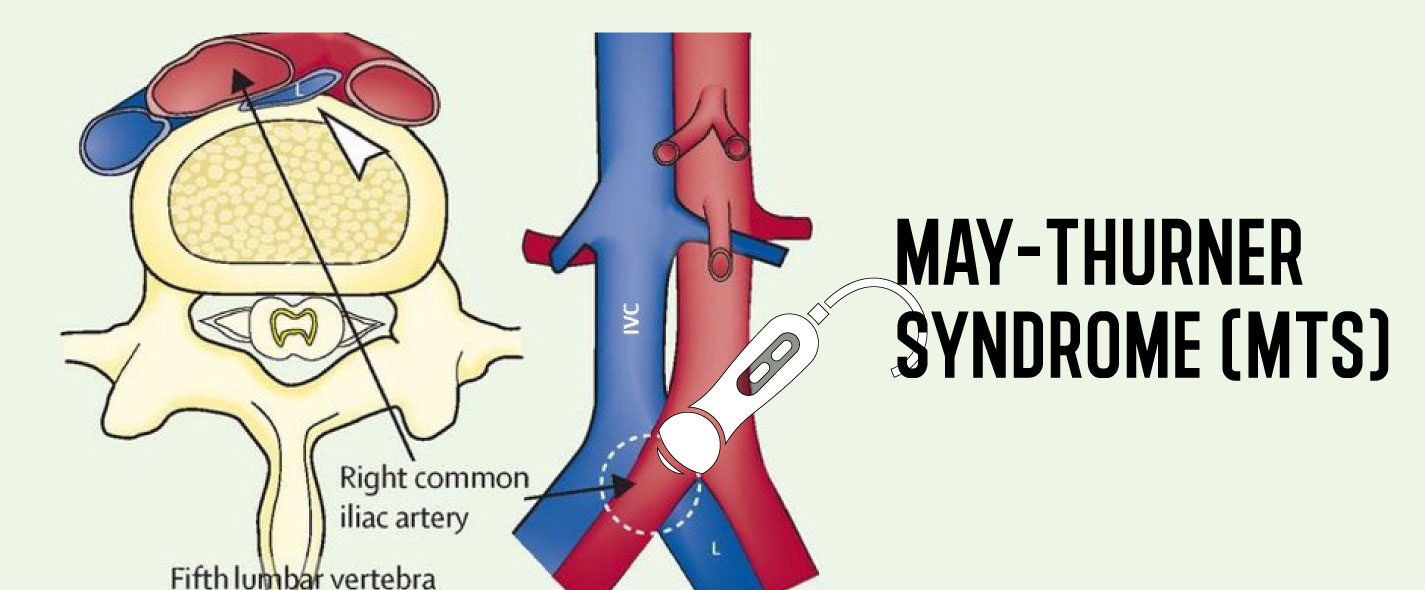A vein in your pelvis is affected by the uncommon vascular disorder known as MTS or the May-Thurner syndrome. It happens when the left iliac vein is compressed by an artery nearby known as the right iliac artery. Blood from your legs and pelvis is returned to your heart through this vein. Since blood cannot flow freely due to compression, scarring and constriction can be observed.
Veins and arteries are the blood-carrying vessels inside our body, the system of veins and arteries is known as the vascular system. Veins and arteries crossing over each other is not a problem, both of these vessels cross each other often. However, this may be a problem for a person if they are suffering from the May-Thurner Syndrome.
Causes of May-Thurner Syndrome
This condition affects both your left iliac vein, which returns blood from your left leg to your heart and your right iliac artery, which supplies blood to your right leg. When they cross one other in your pelvis, the right iliac artery compresses the left iliac vein. As a result, blood cannot flow through the left iliac vein as fluidly at that pressure, which may result in DVT.
As a result, your left leg is more susceptible to developing a deep vein thrombosis (DVT). A blood clot that can be highly dangerous, as It doesn’t merely prevent blood from flowing to your leg. Additionally, it can separate and result in a lung clot. This is a fatal condition known as Pulmonary Embolism.
Who is Susceptible to MTS?
Females are more likely to suffer from MTS as compared to men. Similarly, people with scoliosis are also prone to the syndrome, followed by women who just had a baby, or have more than one baby. A few other conditions that make a person prone to May-Thurner Syndrome;
⦁ Take oral birth control.
⦁ Dehydration.
⦁ Excessive blood clotting due to any condition.
Symptoms of May-Thurner Syndrome
People suffering from the syndrome are likely to be not aware of it unless a DVT is formed. Usually, warning signs are not a part of the May-Thurner Syndrome, however, some people might feel some pain or swelling in their leg. Following are the symptoms of MTS;
The left leg of the patient may exhibit the following signs with Deep Vein Thrombosis (DVT).
⦁ An abnormal change in skin color, extra red or purple skin.
⦁ Feeling heavy, tenderness, and pain in the leg.
⦁ Warm skin.
⦁ Larger than usual appearance of the veins.
Furthermore, if a clot forms in the lungs due to breakage of DVT, the patient may exhibit the following signs;
⦁ Inhaling causes worsened chest pain.
⦁ Faster than normal pulse rate.
⦁ The person might cough blood.
⦁ The person could pass out.
⦁ Breathing difficulties are observed as well.
Treatments For May-Thurner Syndrome
The treatment of May-Thurner Syndrome is based on two main objectives. One is the treatment of existing clots and the second one is to restrict the formation of newer clots. There are a few treatments available for MTS such as;
Angioplasty & Stenting
Stenting and angioplasty are typical May-Thurner syndrome treatments. A little balloon is used to inflate the leg iliac vein, followed by adding a stent. The stent is a tiny metal mesh cylinder that is used to maintain a wide opening for the vein, resulting in the free flow of the blood. Intravascular ultrasound may be used by the vascular surgeon, for the assistance of stent placement.
To treat the second state, blood thinners can be used to treat DVT. Prevention of new clots, while halting the growth of current clots, blood thinners are a beneficial drug for May-Thurner Syndrome.




